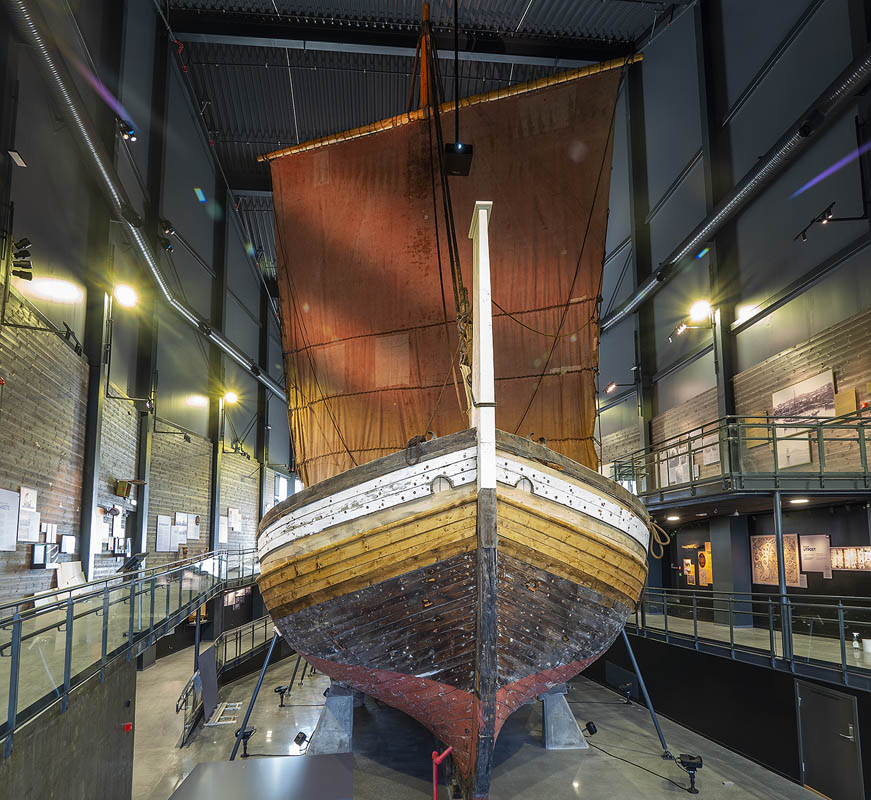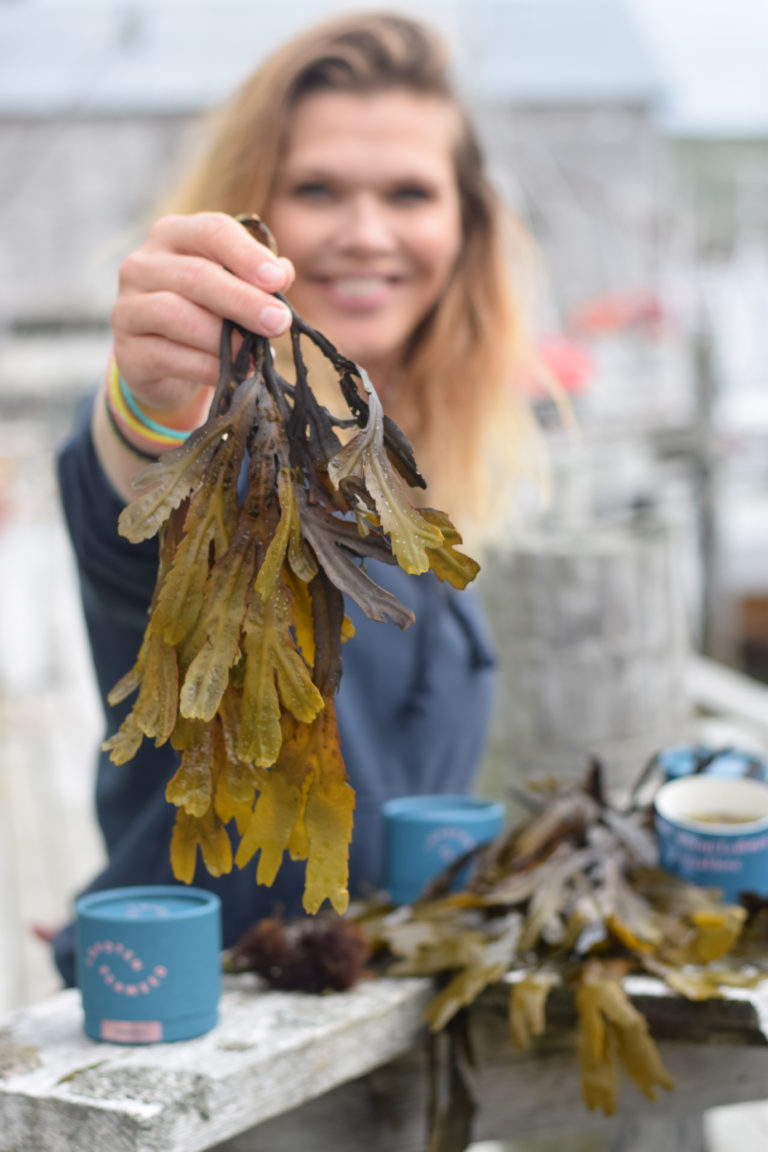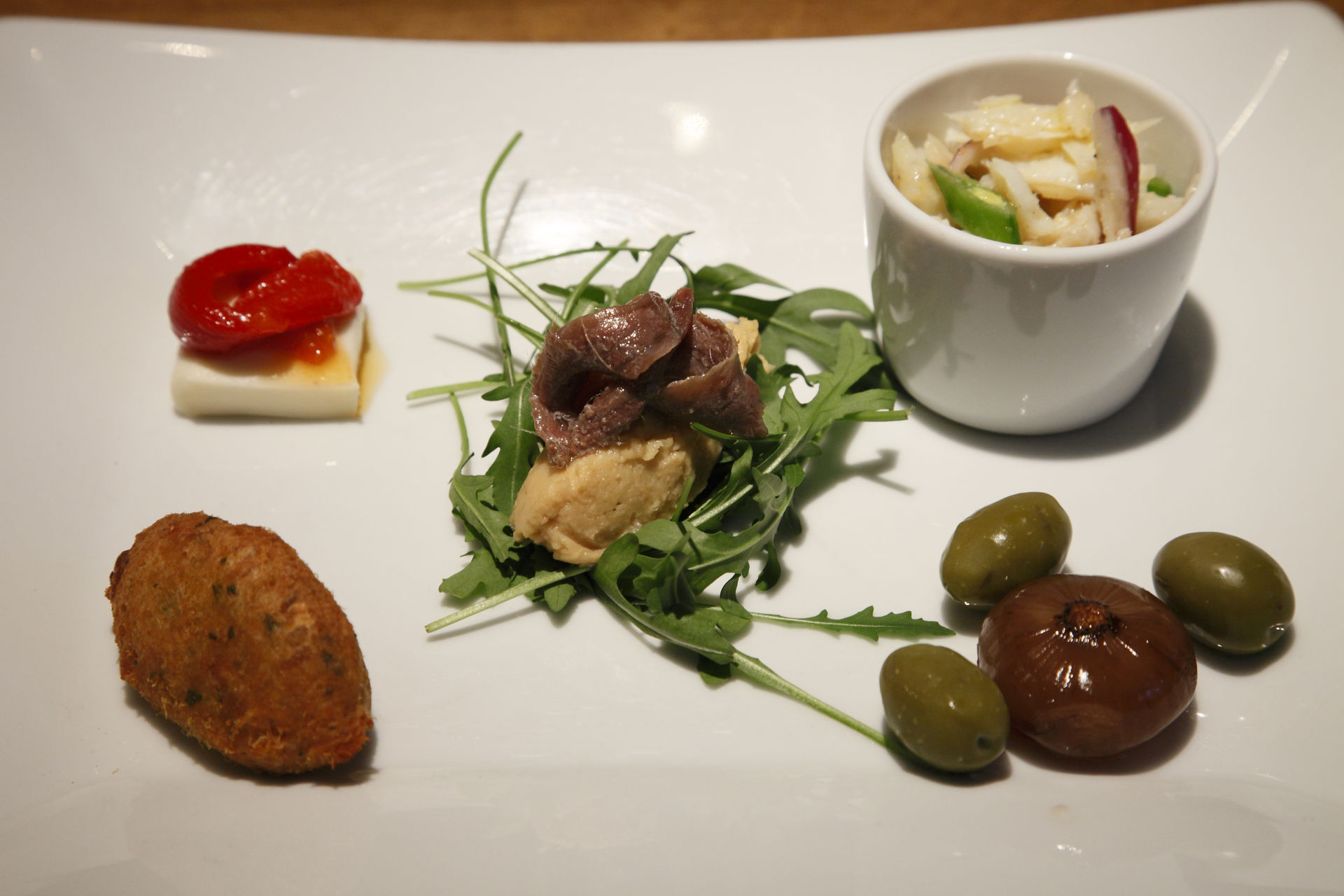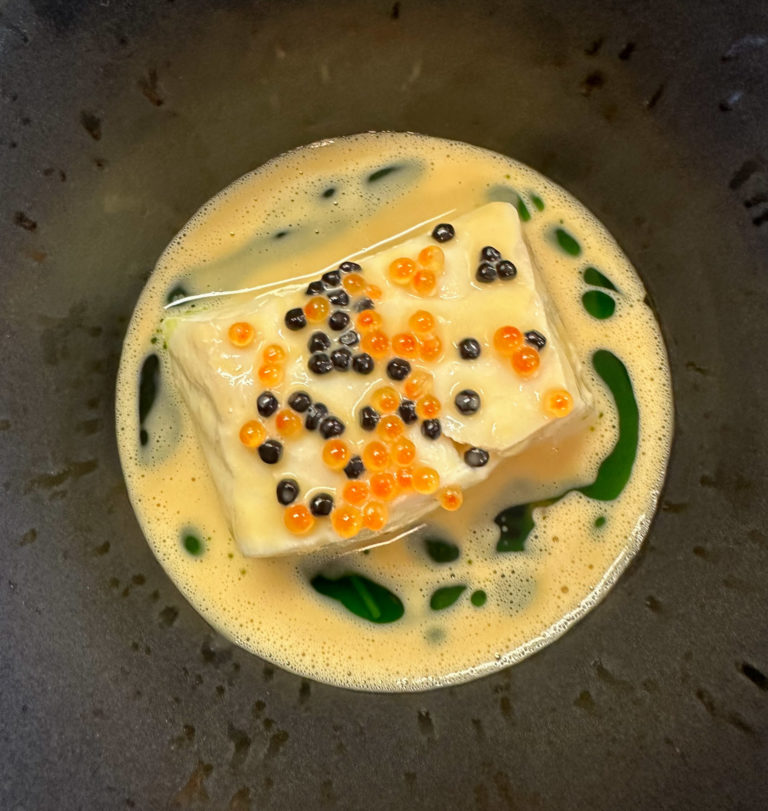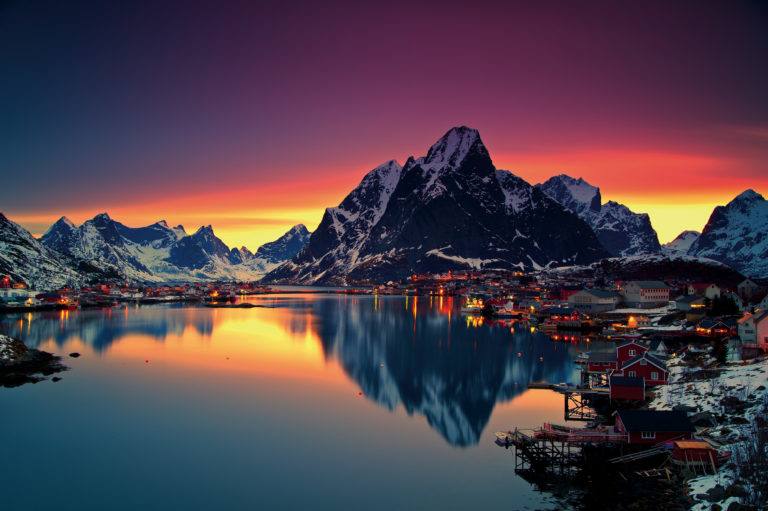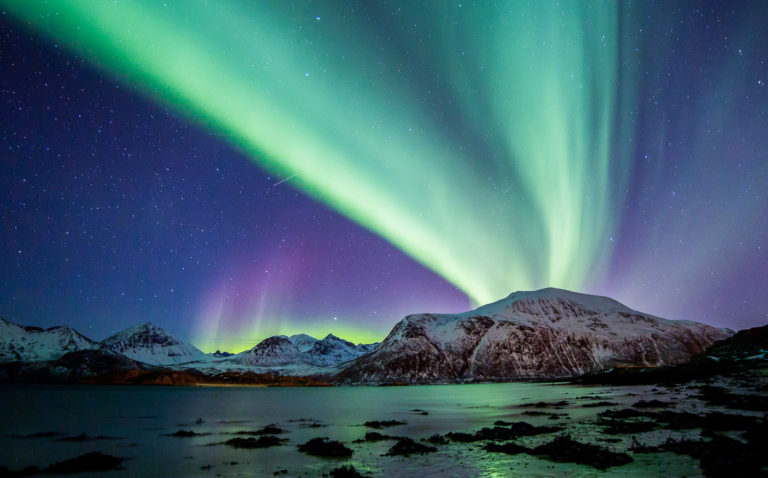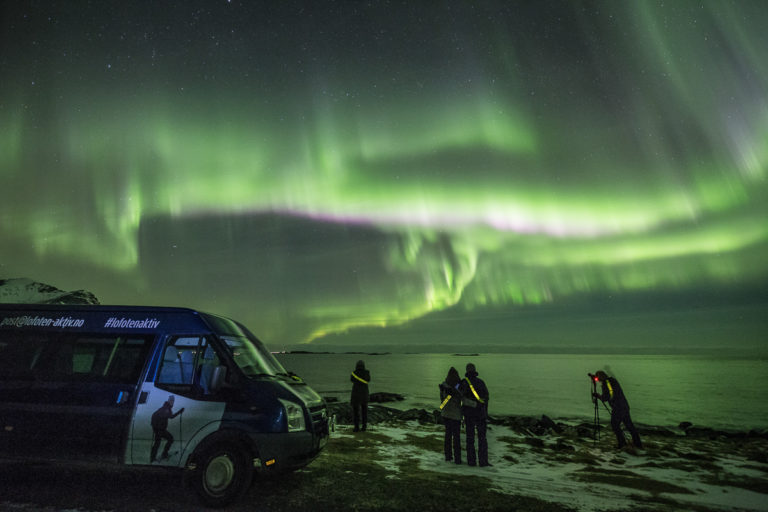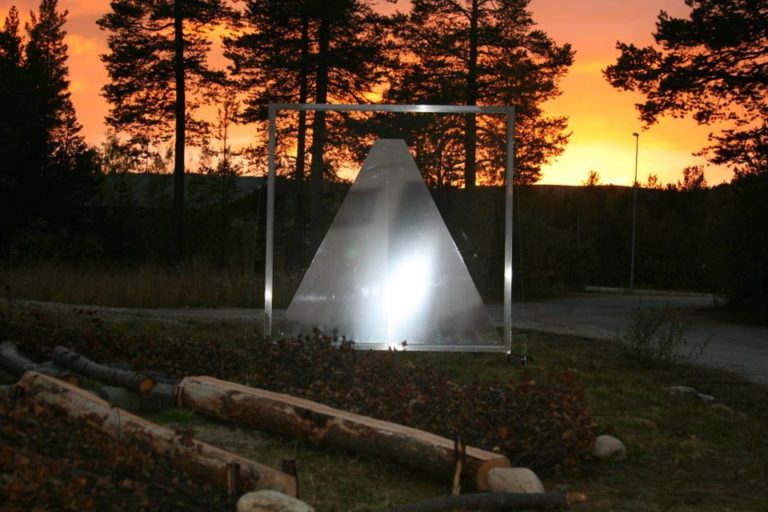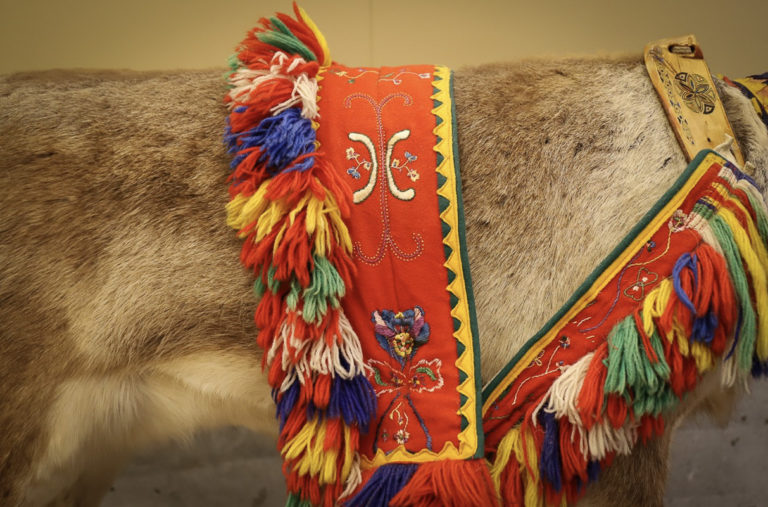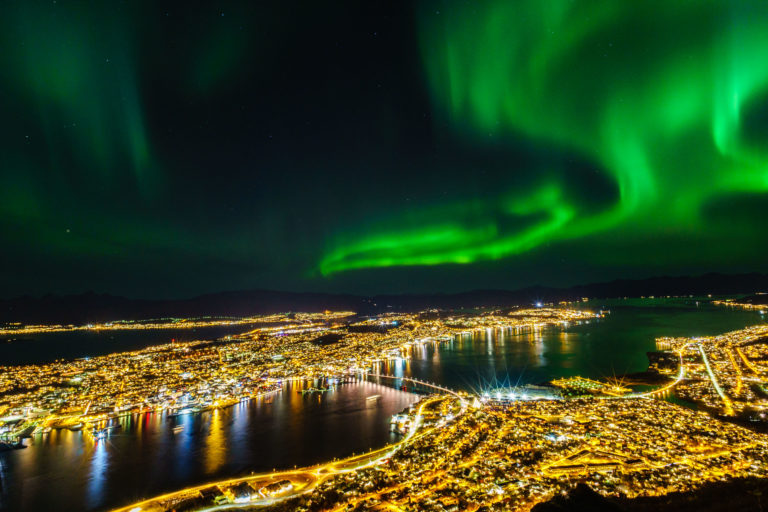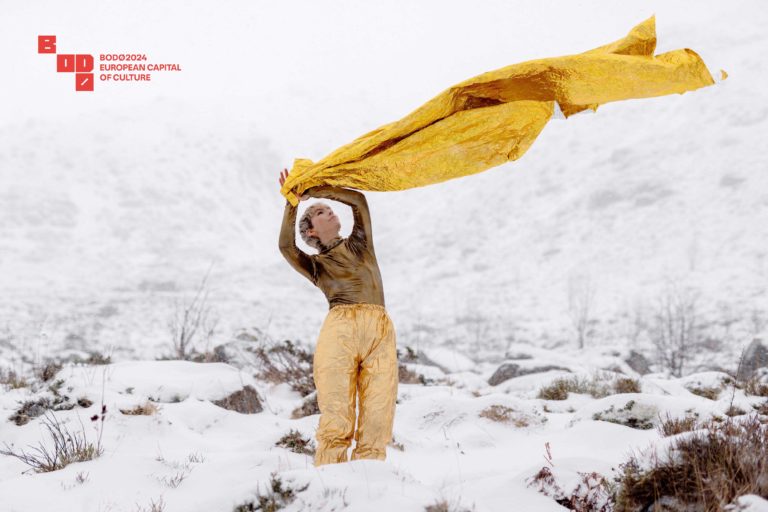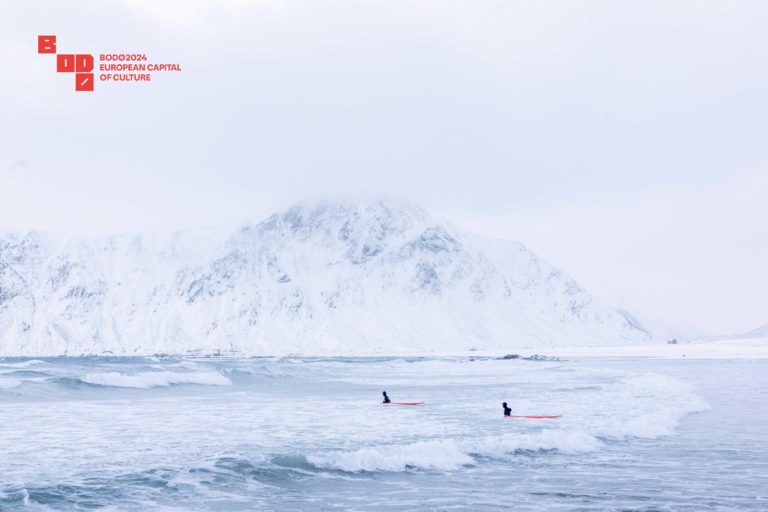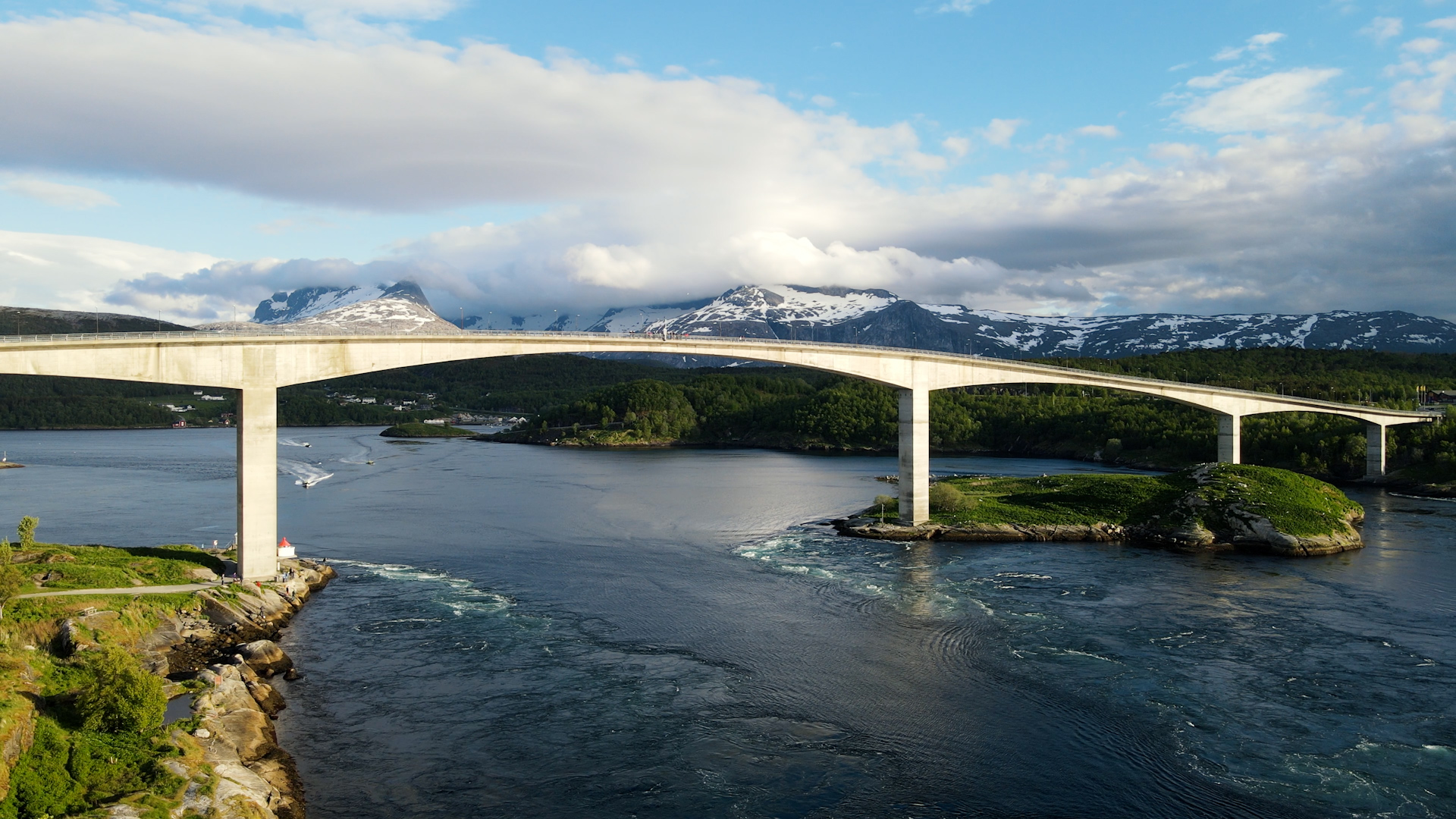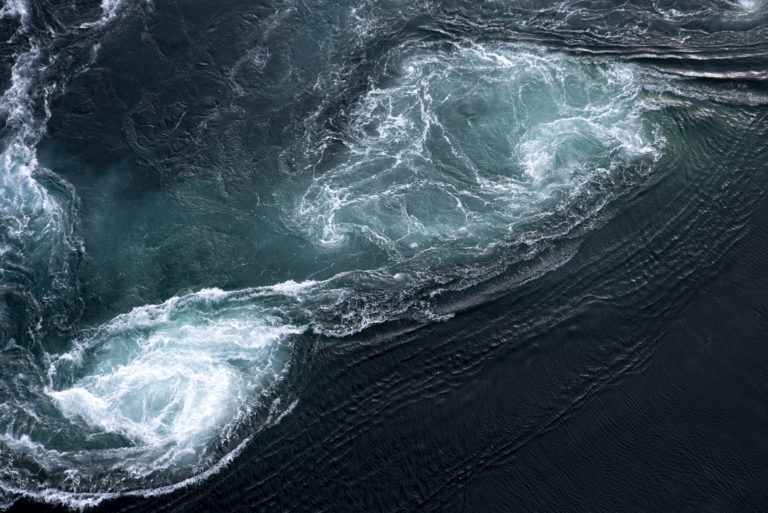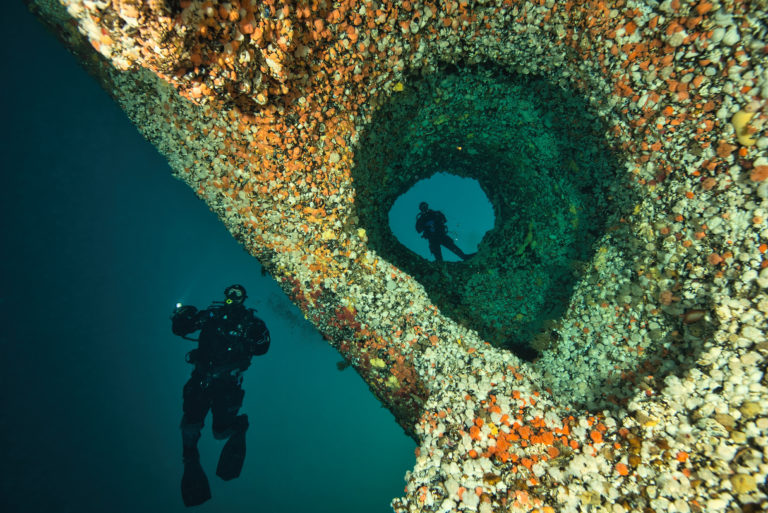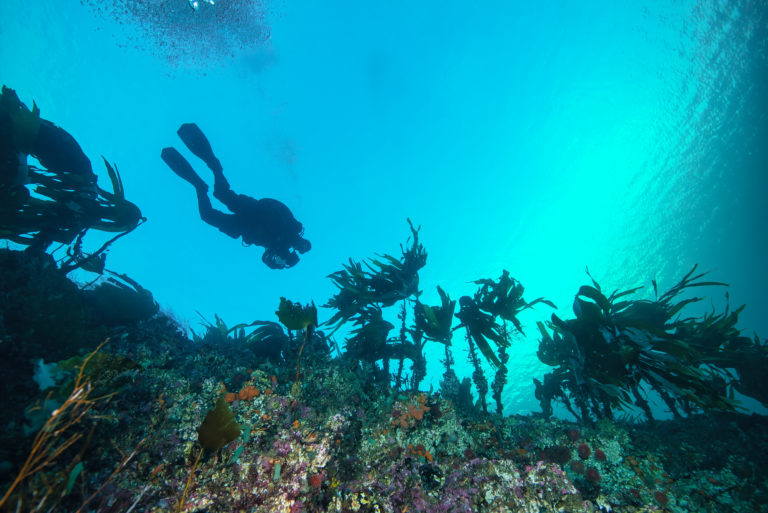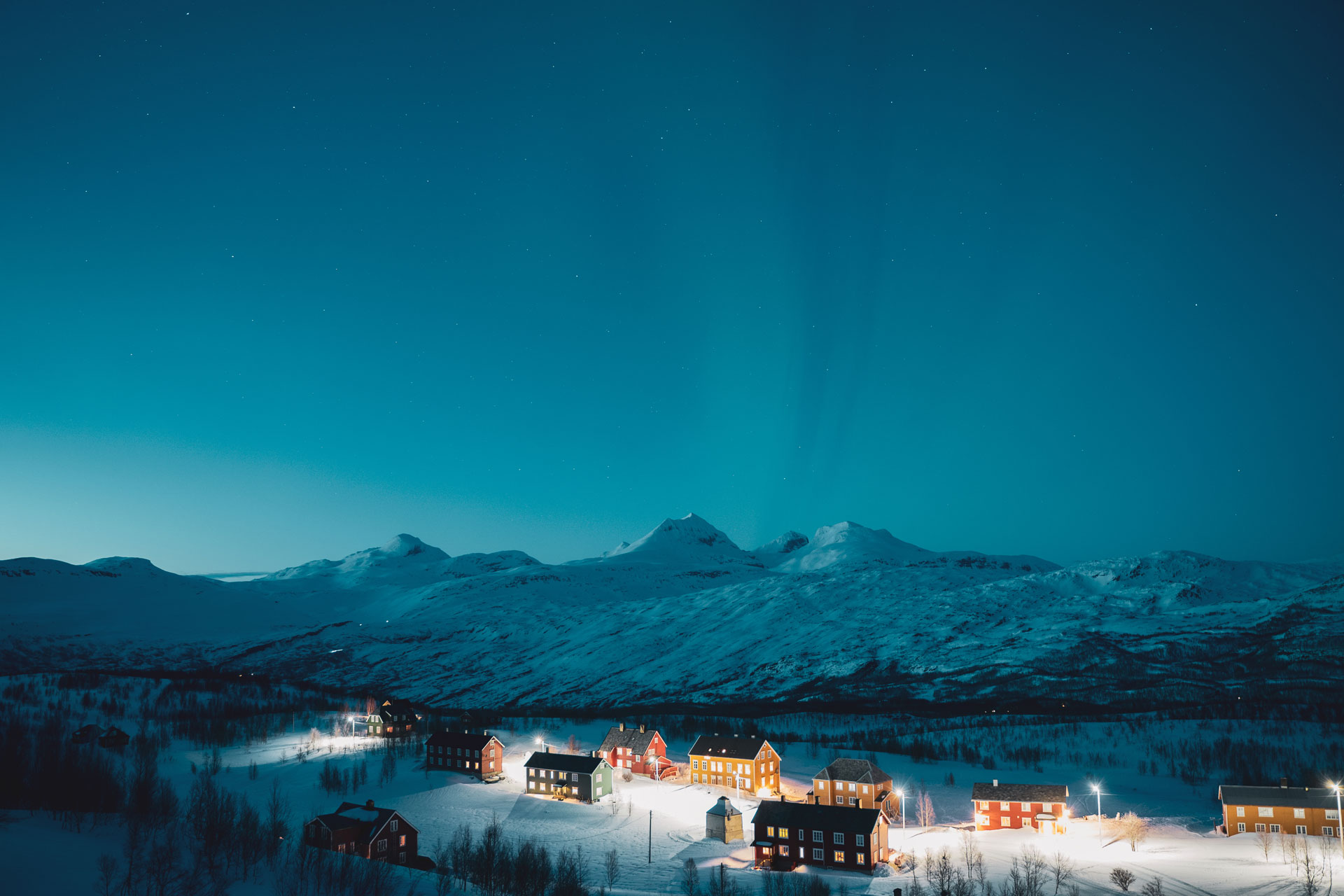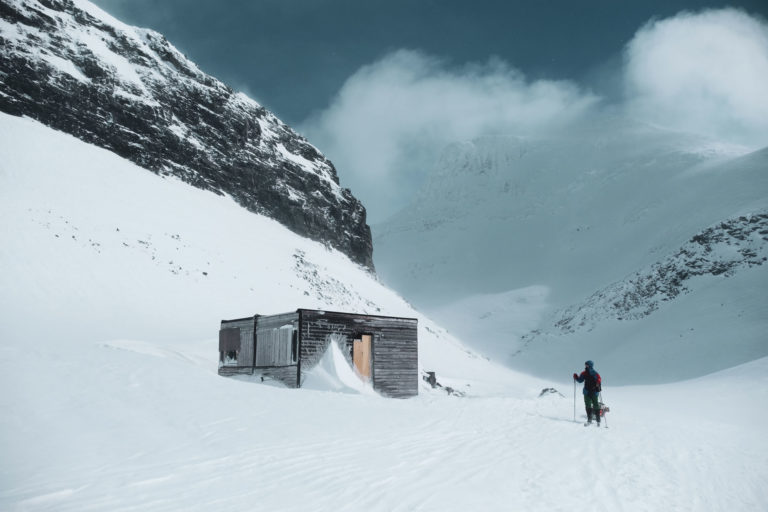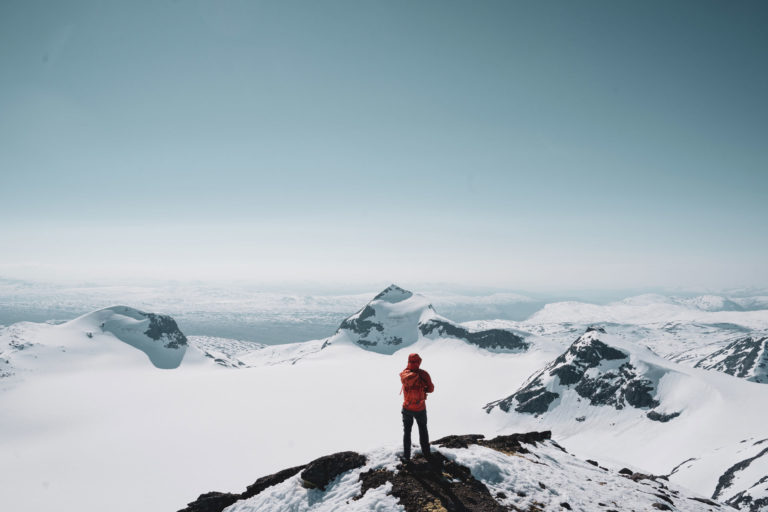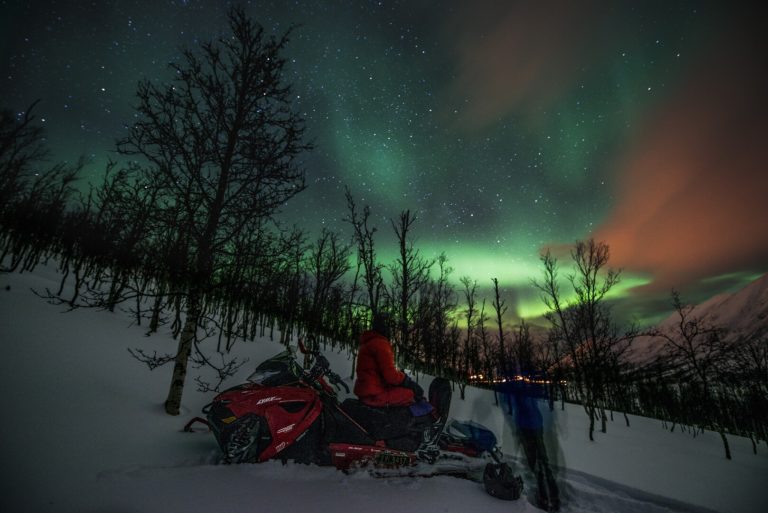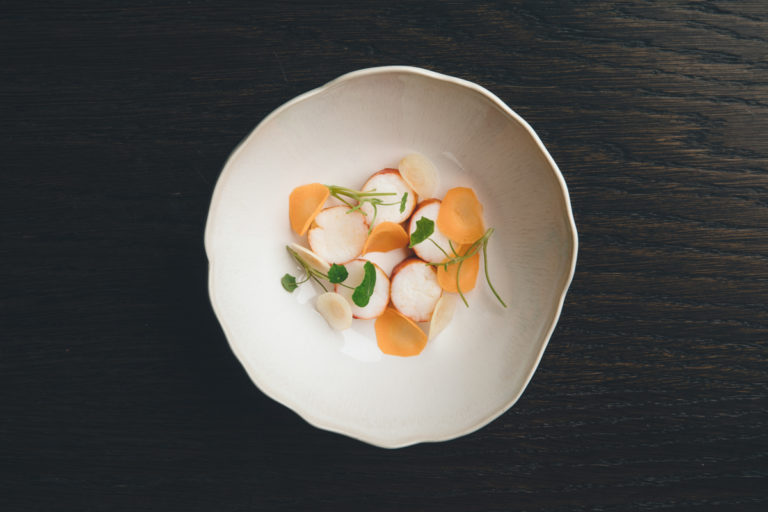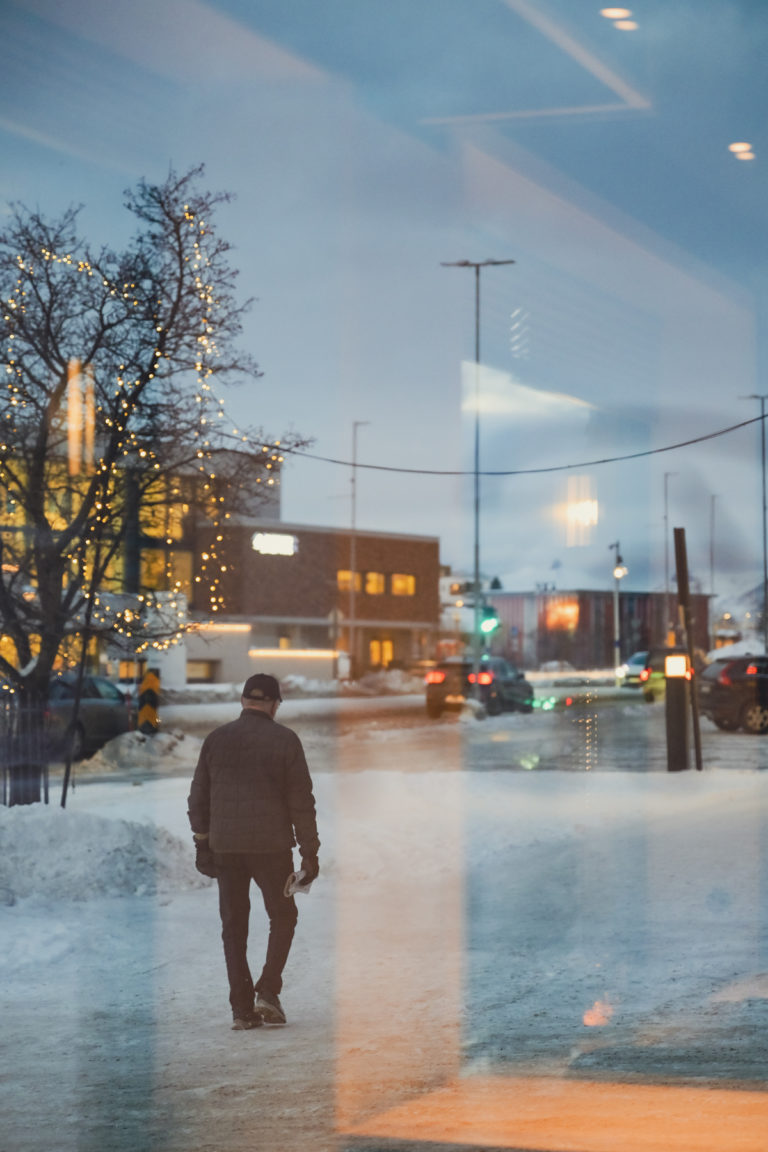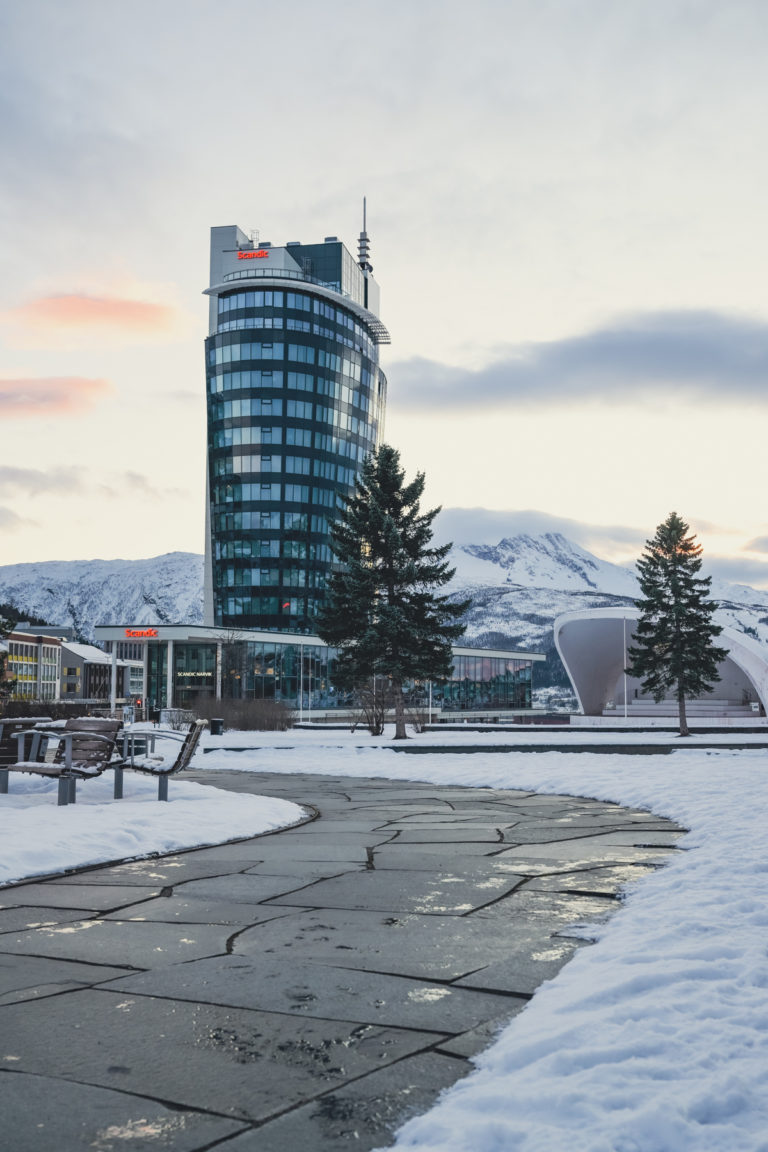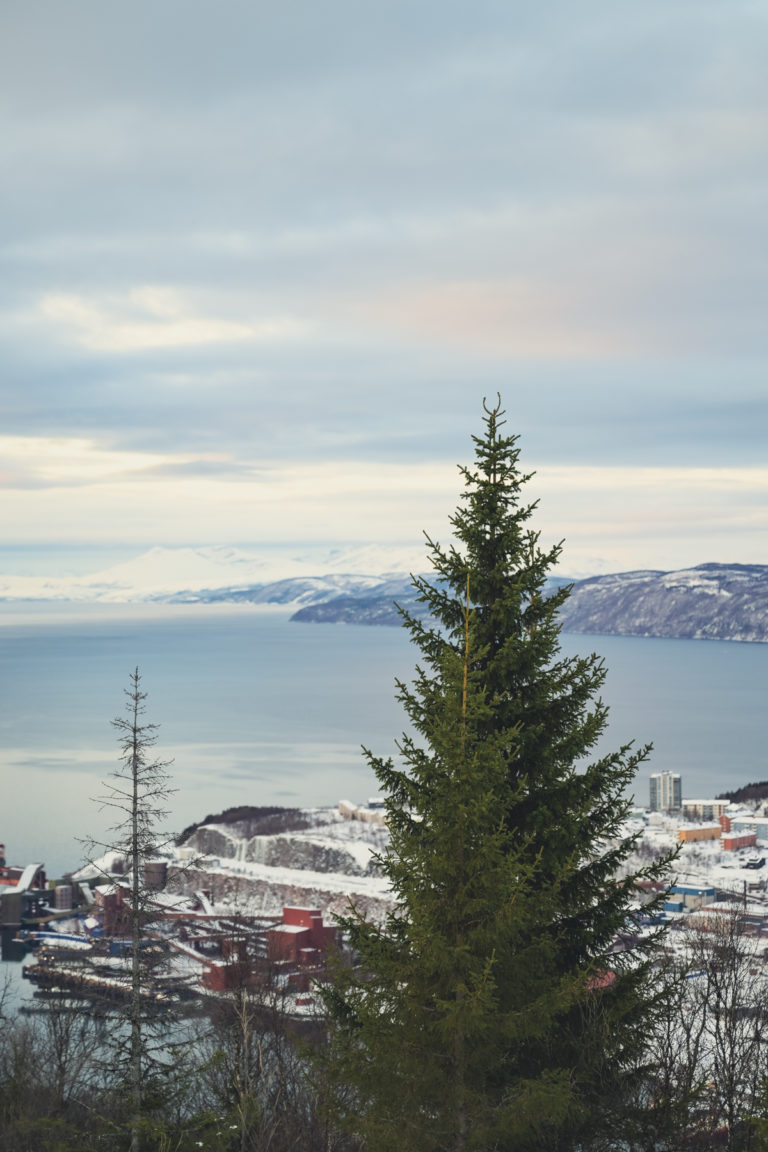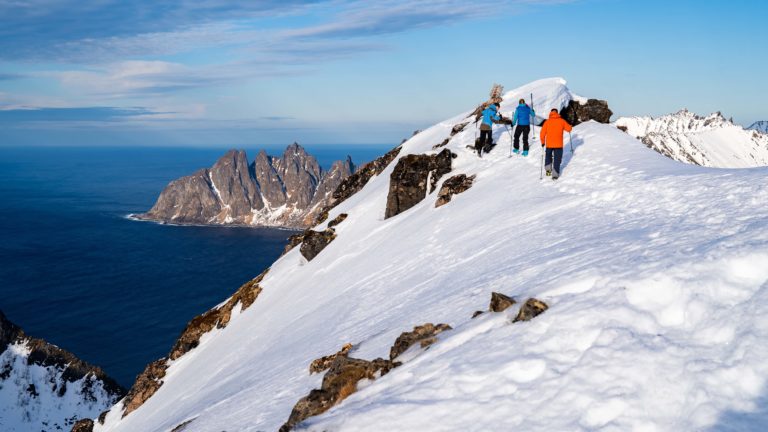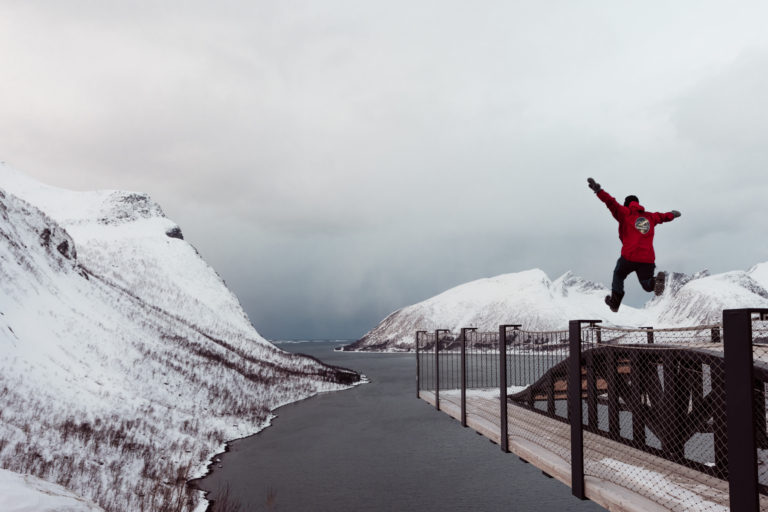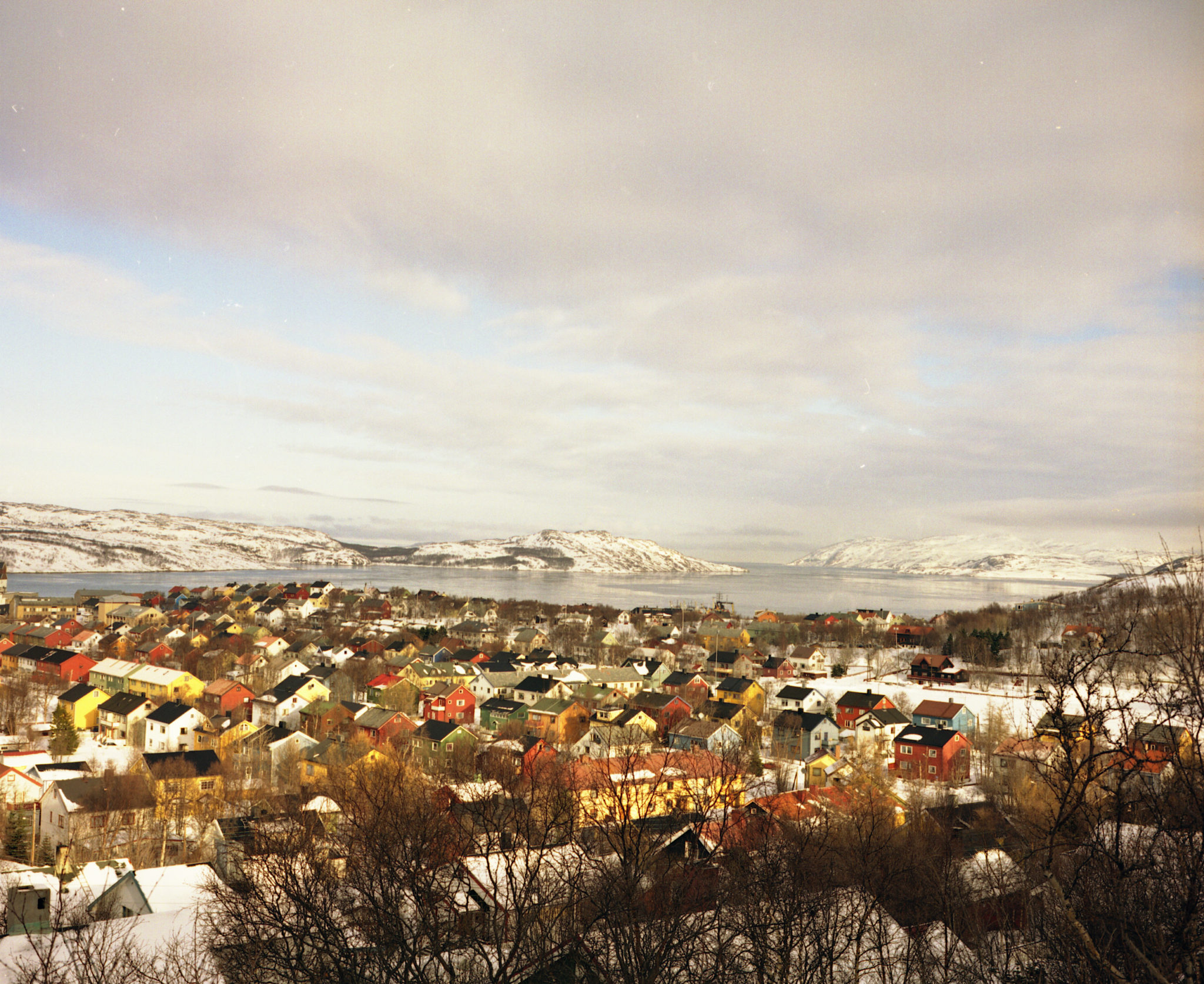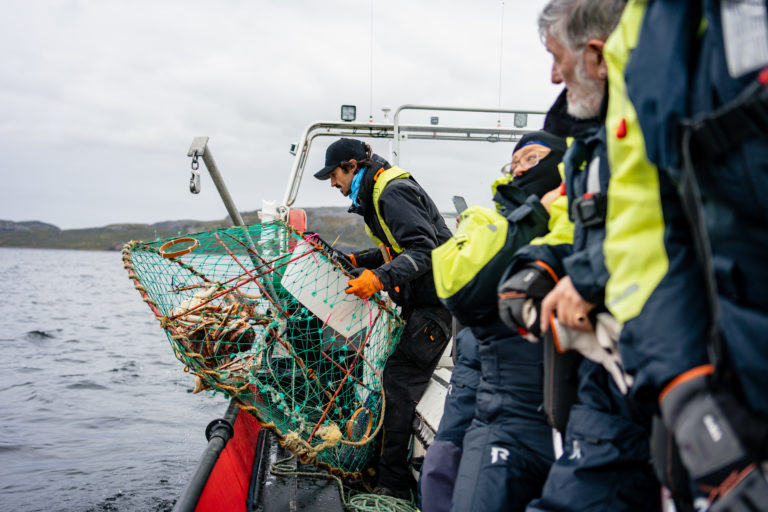A Tale of Two Regions – from the Serene Fjords to the Arctic North
Northern Norway and Fjord Norway combine dramatic scenery, coastal history, and northern adventure for an unforgettable experience. Untouched landscapes that look like they’re straight from a Munch painting. Cuisine that’s so fresh you can still feel the salty water that it was pulled from. The surreal and beautiful Northern lights (they’re on your bucket list for a reason).
Fly to the Fjords, and then head north!
Enjoy the landscape and culture of the Fjord Norway region and then travel up north to experience the beauty and thrills of the arctic, from dog sledding to hunting down the famous Northern lights. Start the journey of your lifetime and book your flights at Fly Widerøe.
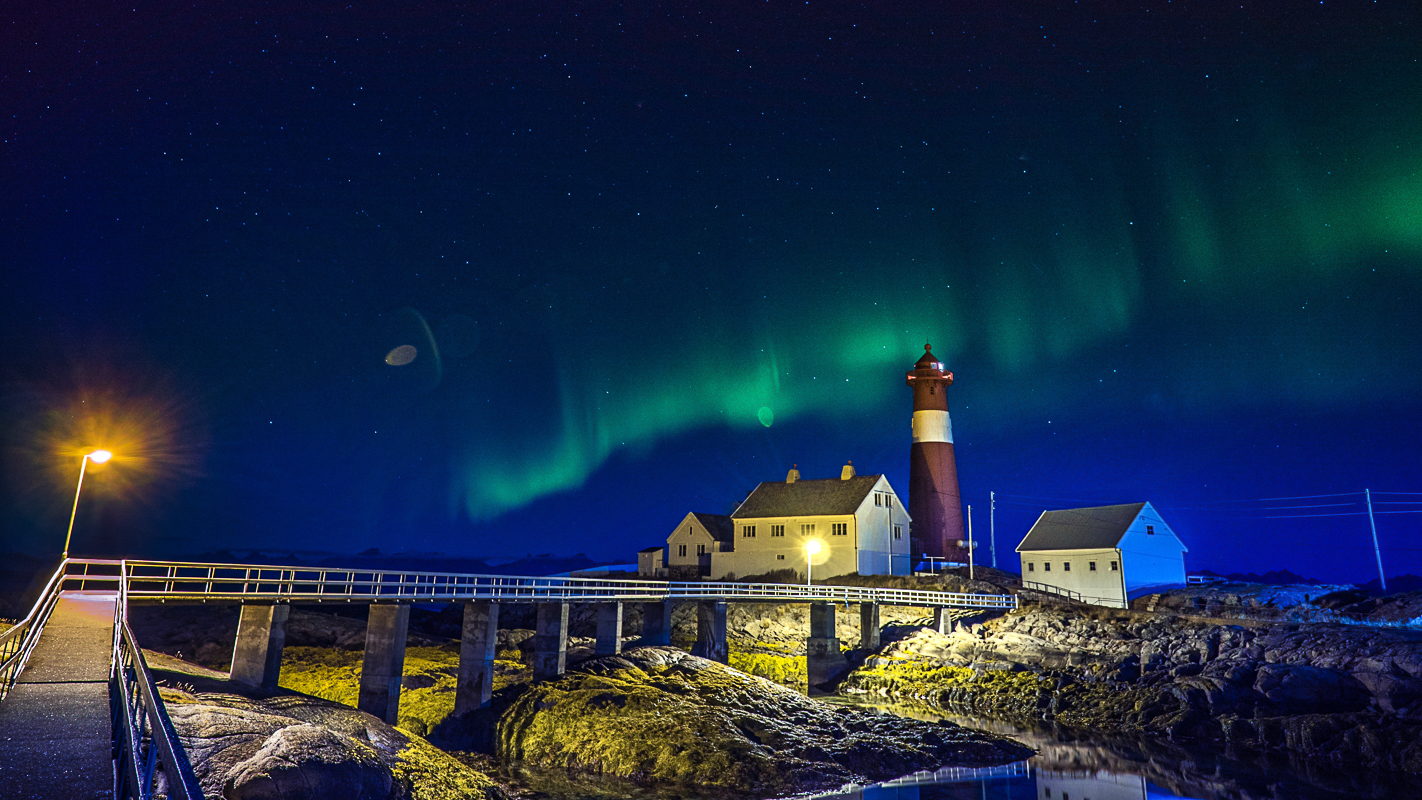
A History Shaped by Trade and Coastal Life
Norway’s history of seafaring trade has long connected the regions. Since the Middle Ages, they have supported trade routes that linked distant shores. Bergen, a key city in Norway, became the gateway for dried fish from the north, particularly the prized stockfish from Lofoten, which was traded widely across Europe. This trade helped establish Bergen as a busy centre, with Hanseatic merchants playing a key role in its importance in global trade. The Pomor trade further highlighted this connection, with Northern Norway’s fishermen exchanging fish with Russian traders from the White Sea. This relationship mirrored the open, seafaring nature of both regions and contributed to the vibrant coastal communities we see today.
Life along the coast has shaped a unique cultural identity in both Northern Norway and the Fjord region, where maritime traditions and fishing communities continue to reflect Norway’s heritage. For over a century, Hurtigruten — often called the ‘national highway of the coast’ — has connected these coastal communities, from Bergen’s ports to remote fishing villages in the north. Once a lifeline for trade and cooperation, Hurtigruten and similar routes now offer visitors a way to experience Norway’s coastal landscapes and culture firsthand.
Culinary Treasures
From ocean to table, Norway’s coastal regions are, not surprisingly, celebrated for their fresh, local seafood. They offer a wide range of delicacies, from cod and stockfish to regional specialties. In Northern Norway, traditional dishes like tørrfisk (stockfish) and rakfisk (fermented fish) are integral to the region’s long history of preserving fish for the harsh winters.
Meanwhile, the West Coast is renowned for dishes such as klippfisk (dried and salted cod) and sursild (pickled herring), all reflecting the region’s maritime heritage. Food is a vital part of the Norwegian experience, with each region offering distinct culinary traditions that give travellers an authentic taste of Norwegian culture. Many dishes are prepared much as they were in the past, but with a modern touch, highlighting sustainable and seasonable ingredients.
The Charm of Contrasting Landscapes
Northern Norway and the western part of the country share attractions such as fjords, glaciers, and spectacular coastal landscapes that draw tourists each year. However, they differ in several noticeable ways. Fjord Norway is renowned for its deep, long fjords like Sognefjord and Geirangerfjord, where towering mountains rise dramatically from the water’s edge, creating some of the most iconic views in the country. In contrast, Northern Norway has a more varied landscape, with fjords, islands, and wide plateaus. This region spans the counties of Nordland, Troms, and Finnmark, offering a mix of coastal beauty and wild landscapes that attract adventurers and nature lovers.
Seasonal contrasts also make these regions unique. In Northern Norway, the midnight sun lights up summer nights, while the aurora borealis fascinates winter visitors. Meanwhile, the west enjoys mild winters and cooler summers due to the Gulf Stream, offering travellers a scenic playground year-round. The mix of landscapes, from fjords to Arctic shores, offers a unique chance to experience nature in its purest form.
Cultural heritage and living traditions
Alongside these natural wonders, both Northern Norway and the Fjord Region offer travellers a glimpse into Norway’s past and present. In the far north, Sámi culture thrives, deeply rooted in the Arctic landscape. For thousands of years, the Sámi people have lived in harmony with this rough environment, and today, visitors can experience and learn more about their traditions through art, music, and unique activities like reindeer sledding. As you travel along the West Coast, fishing remains central to coastal communities, with many locals still using traditional methods to gather the sea’s resources.
This connection to the ocean invites travellers to experience the rhythm of life that has shaped these communities for generations. Further south, traces of indigenous culture reflect Norway’s ties to its earliest inhabitants. Although the Sámi culture is most prominent in the north, similar themes of resilience, resourcefulness, and a close relationship with nature have also shaped the traditions of coastal communities in the Fjord Region. Both regions have preserved their traditions while embracing modern values, offering visitors a place where the past and present are intertwined.
Where Urban Life Meets Nature’s Wonders
From the northern reaches of the Arctic to the iconic fjords, Norway offers experiences as diverse as its landscapes. While famous for its natural beauty, Norway’s cities also offer a rich mix of culture, history, and modern attractions
In Bergen, you can explore the colourful wooden houses of Bryggen, a UNESCO World Heritage site that dates back to the 14th century, offering a fascinating glimpse into the city’s Hanseatic past. Stroll through narrow alleyways, explore the lively fish market, or take a scenic ride up Mount Fløyen for panoramic views of the city and its stunning surrounding fjords. A perfect balance of urban life and nature.
Tromsø, known as the “Gateway to the Arctic” and nicknamed “Paris of the North”, offers modern architecture and rich cultural experiences alongside winter activities like dog sledding and whale watching. Not to overlook the fact that they specialize in Northern Lights tours. Whether you’re looking for adventure, relaxation, or cultural experiences, these regions invite you to discover the raw beauty of Norway. With a blend of urban charm and raw nature, visitors can easily enjoy both city life and the quiet outdoors that Norway is known for.
Welcome to the North!
Bodø – European Capital of Culture 2024
Sitting between an archipelago and the open ocean, vibrant and lively Bodø is the heart of the Salten region and Northern Norway’s second biggest city. A glacier, mountains, islands and a strong maelstrom surround it. It’s also located in the northern lights belt just north ofthe arctic circle.
This is the place to walk the streets, have coffee in chic coffee bars, dine in a good restaurant and go shopping. Photographers go out on the breakwater to the little Nyholm fortress to capture the view of the city with the peaks in the background or climb the hill at Rønvikfjellet to see the city from above. The northern light aren´t the only attraction, as Bodø´s selection as a European city of culture in 2024 attests. The Stormen concert hall and the new library are the newest cultural landmarks.
Bodø and Salten
The Saltfjord is a huge fjord system, reaching 80 km inland. However, near the mouth thereis a passage that is both shallow andnarrow. You could compare it with all 90,000 footballfans at Wembley Stadium trying to get out through a single door after the match. When thetide comes in, there is simply way too much water pressing its way through the narrows. Afantastic spectacle ofwhirlpools can be observed from the cliffs on the shore as the waterrushes through in 10 to 15 knots. Go there with a fishing rod or take a RiB tour.
There is a whole world of adventure waiting for you in northern Norway. Cross country skiing in Sulitjelma is recognised as some of the best in the whole of Norway. In Sulisfjellet, Fjellfarer runs cross-country trails, which Martin Johnsrud Sundby describes as World Cup standard. Dog sledding is another authentic winter experience that you can enjoy either as a passenger or driving your own team. No previous experience is needed to drive the sled into the white landscapes and enjoy the arctic nature. You get to meet your dogs first and prepare the sled together. They are a bunch of barking huskies more excited than you to start the trip! They are well used to visitors, great with children and love getting your attention and petting.
Tromsø – Paris of the North
A vibrant city with arctic history, culture and cuisine, surrounded by mountains, fjords and islands below the Northern Lights. With a visible past, a fascinating history, a lively, colourful city centre, an inclusive nightlife and numerous attractions. Use Tromsø as a base to foray into Arctic wilderness chasing Northern Lights.
Today, Tromsø has a mature tourist industry specialising in finding the Northern Lights. The amount of organized tours by bus, minibus, boat, snowmobile and dogsledding heading out every night to hunt for those green rays is impressive. This assures you to get the best experience under the Northern Lights. The competition is fierce, so everybody is on their tiptoes to make sure that the lights are found.
Narvik – Stunning landscape, northern lights and a ski paradise
Narvik is both an interesting and beautiful city, located in a wild and rugged landscape – ideal for Northern Lights safaris! The mountains soar 1,800 metres (5,905 ft) straight up out of the Ofotfjord to form some of our country’s wildest landscapes. Not only is this spectacularly beautiful site, this is even a city that offers Northern Lights safari by train.
Ski from summit to the city. Narvik is a dream destination for the ski lovers, off-pist or cross country. This is because the city is laying so close to Narvikfjellet Mountain, where you can ski downhill a thousand meters of elevation to the fjord and city below. This is the future World Championship tracks, available for you to try out.
Senja – A Micro-kontinent
There is nothing stopping the fury of the Atlantic from hitting the outer coast of Senja. The coast drops 7-800 metres from the mountain tops directly into the ocean. The landscape is rock hard, with barren cliffsides and rocky promontories. There are also coves and bays with fishing villages, and some of the sandy beaches are of that South Sea quality.
Senja Island is like a micro-kontinent, with a mountainous spine, a friendly southern coast, light birch forests, farmland and a wild, stormy and precipitous ocean side. Go to the ocean side for a bit of drama, and head east for relaxation. It’s an area with great contrasts, both in scenery, activities and weather.
Alta – The City of the Northern lights
Alta’s dry climate offers cold clear winters. The Northern Lights town of Alta is blessed with a dry climate, because it lies deep within the beautiful Altafjord. In winter, temperatures can drop below minus 30, but the dry climate makes the cold a part of the experience. The light and darkness of the north is fascinating with the Arctic winter light combined with the northern lights.
Winter’s most beautiful fairytale, dog sledding into the wilderness
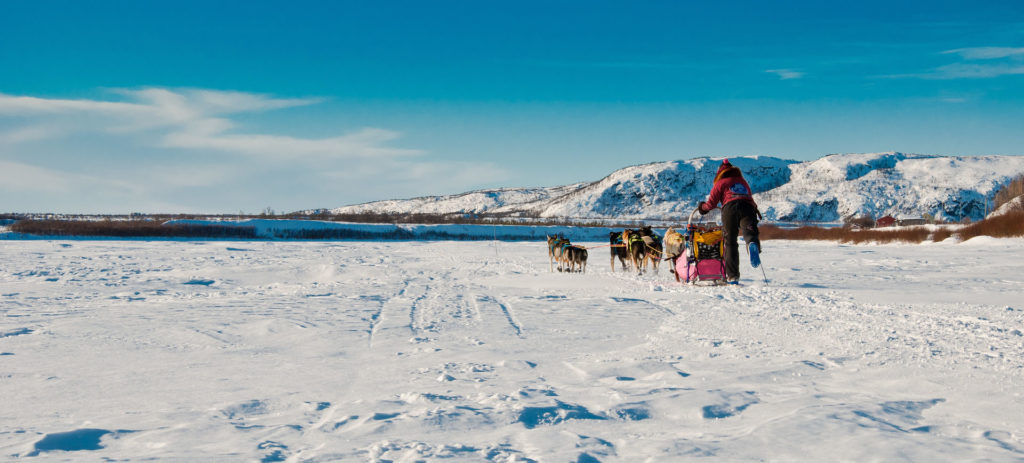
Winter’s most beautiful adventure, Finnmarksløpet (Dog sledding race), starts from Alta every year in March and is a popular experience for visitors. Dog-interested guests can visit local dog farms throughout the year and even try to run their own dog sled team in the winter.
Kirkenes – King Crabs, wilderness and dramatic WWII history
Kirkenes is the far East of Norway, a cozy town, surrounded by wilderness and great nature. It’s a mekka for King Crabs, and you have several organized boat tours for visitors to join the crab fishing, and enjoy the meal afterwords.
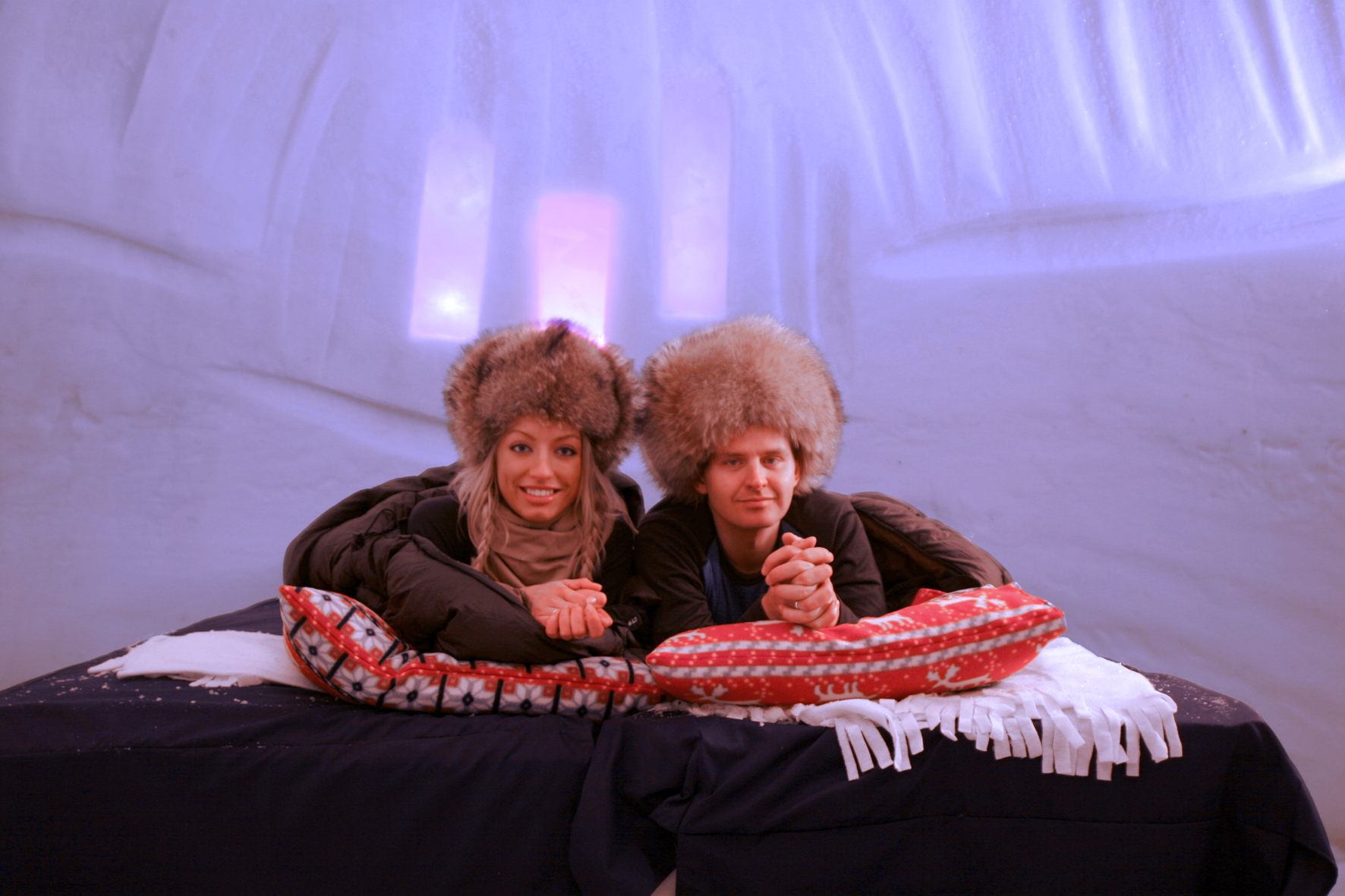
Inside the Kirkenes Snow Hotel you have the chance to make a once in a lifetime experience – sleep comfortable on ice. In the snow hotel, the rooms have a temperature of -4, even if it is -30 outside. Wrapped in a comfy sleeping bag, you may have the best sleep in your life. The Kirkenes Snow Hotel is adorned with ice sculptures, with a new theme every winter. A true piece of art.
Magic has never been more accessible!
Now that you have seen the best of the north, it is time to head south and experience one of the most spectacular landscape in the World. Fjord Norway. It has never been more accessible, due to Widerøes direct flights to Bergen from Bodø and Tromsø. Here you can enjoy adventures in and around Bergen, spectacular fjords, world-class dining and iconic scenery.
Welcome to Fjord Norway!
The Norwegian fjords are transformed in winter. They become rawer and wilder, and the landscape is dominated by a constantly changing mix of light, colour and sound. Winter is the season for magical experiences in Fjord Norway, which you can experience in lots of ways. Read more about this unique combination at the Fjords and Northern Lights website.
What are you waiting for?
From the western Norwegian fjords to the Northern Lights, this trip will delight you with majestic views and unique experiences – from art, culture and adventure to delicious North Atlantic seafood. The impeccably trained but playful dogs that you lead through the snowy landscape yourself, the unique and dreamy Northern Lights. See and do things that you have only read about and that some people will never experience. Norway is easy to reach by plane, and Bergen is a major hub for international flights.
For example, you can fly directly from Munich to Bergen with Widerøe and start your Norway vacation immediately!


